Understanding the Value of Your Silver Bars
Determining the value of silver bars involves several critical factors, the foremost being purity. Silver bars are typically measured in troy ounces, with the standard purity level being .999 fine silver. This high level of purity ensures that the silver content is almost entirely devoid of impurities, thereby maintaining its value. Investors should always verify the weight and purity of their silver bars to accurately assess their worth.
Another significant determinant of value is the current market price of silver. The price of silver fluctuates daily based on supply and demand dynamics, geopolitical events, and economic indicators. The spot price of silver serves as a benchmark, helping investors gauge the real-time market value of their holdings. By staying informed about these market conditions, investors can make strategic decisions about when to sell their silver bars.
The form in which silver bars are produced also plays a role in their value and liquidity. Minted ingots, known for their refined finish and uniform shape, often command a higher premium compared to cast bars, which are poured into molds and have a more rustic appearance. While cast bars may be less aesthetically pleasing, they are often produced by reputable mints and can be a more cost-effective investment.
Historical trends and recent movements in silver prices provide valuable context for investors. Over the past few decades, silver has demonstrated considerable volatility, with prices reaching significant highs and lows. Understanding these patterns can guide investors in identifying optimal selling windows. For instance, during periods of economic uncertainty or inflation, silver often becomes a sought-after asset, driving up its price.
In sum, the value of your silver bars is a multifaceted equation, influenced by purity, market price, form, and historical trends. By comprehensively understanding these elements, investors can maximize their returns and strategically time their sales.
Best Practices for Selling Your Silver Bars
When it comes to selling your silver bars, following best practices can maximize your returns and ensure a smooth transaction. The first step is to assess the legitimacy and reputation of potential buyers. Begin by researching online platforms that specialize in precious metals. Websites such as eBay, APMEX, and JM Bullion are well-known marketplaces where you can find a substantial number of buyers. However, ensure to read reviews and verify the credibility of these platforms to avoid scams.
Local dealers and auction houses are other viable options. Visit local coin shops or precious metal dealers and inquire about their buying process. It’s advisable to choose dealers who are accredited by recognized organizations like the Professional Numismatists Guild (PNG) or the American Numismatic Association (ANA). If you opt for auction houses, consider those with a history of dealing in precious metals, as they often attract serious buyers willing to pay market value.
Getting your silver bars appraised is a crucial step. A professional appraisal will provide an accurate assessment of your silver’s purity and weight, which are key factors in determining its value. You may also want to get your silver bars certified by a reputable organization such as the London Bullion Market Association (LBMA). Certification can add credibility and potentially increase the selling price.
Negotiating the best price involves understanding the current market value of silver, which fluctuates based on supply and demand. Stay informed about real-time price changes and use this knowledge during negotiations. Be aware of any transaction fees that may apply, especially when using online platforms or auction houses, as these can affect your net profit.
Ensuring secure payment methods is another essential aspect. Opt for payment methods that offer protection, such as bank transfers, PayPal, or escrow services. Avoid cash transactions unless you are dealing with a highly trusted buyer.
When it comes to packaging and shipping your silver bars, take extra precautions to prevent damage or loss. Use sturdy, tamper-proof packaging, and consider insuring the shipment for its full value. Track the package and request a signature upon delivery to confirm receipt.
Finally, be wary of common pitfalls such as undervaluing your silver, ignoring hidden fees, and dealing with unverified buyers. By following these best practices, you can navigate the selling process with confidence and achieve the best possible outcome for your precious metal investment.



